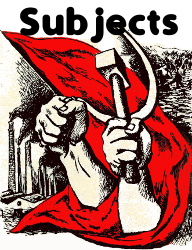





Bernard Goldstein: Polish Jewish socialist, he became an important leader in the Jewish Labor Bund in Warsaw before WWII. A worker himself, he was mainly involved in trade union organizing, and was the head of the Bund's pre-war self-defense militia. During WWII he remained in the Warsaw Ghetto, continuing his Labor Bund work, urging the Jews in the Ghetto to resist and spreading the knowledge of the Nazis' real plans to kill all of them. Goldstein was the leader of the Warsaw Ghetto uprising and personally directed the fighting from his hideout. and after it's definitive crushing was able to escape. He continued his involvement with the Polish Resistance till the end of the war, he also participated in the Warsaw Uprising. After the war he immigrated to amerika. Goldstein wrote a memoir Five Years in the Warsaw Ghetto [239 pages] about his experiences during WWII. Nahum Kohn: Polish Jew and resistance fighter. After a month of seeing how the Nazi occupiers treated Jews, Kohn decided to escape over the lines into then Russian-occupied Poland, where Jews were safe. He settled down in what is now western Ukraine, in the Lutsk area. After the Nazi invasion of the Soviet Union, Kohn began inciting young Jews to arm themselves and escape to the forests, for he knew the fate reversed for the Jews under Nazi occupation from the letters he received from his relatives in Poland. It wasn't long before he went to the forest and began to organize a Jewish partisan group to fight the Nazis and Ukrainian fascists. In 1942 he and his group joined a large Soviet partisan group under the leadership of Aleksander Felyuk. Then after a serious injury and convalescence, Kohn joined an even larger Soviet partisan group led by Dmitry Medvedev and specializing in espionage and externally supporting the activities of famous Soviet spy Nikolai Kuznetsov or as he was known to the Nazis "Paul Siebert." Kohn left the forest for a short time and worked as a watchmaker in Rivne, acting as an information drop point for Kuznetsov and other Soviet agents working in Rivne. Kohn later returned to the armed partisan activity in the forest and fought till the end of the war with passion. He wrote a book, A Voice from the Forest [244 pages], about his experiences during the war and his close work with Kuznetsov. Florian Mayevski: Polish Jew and resistance fighter. During the Nazi occupation, in 1941, his younger brother (17) was arrested by the Gestapo and executed. After the daily harassment and forced moves, he and his family were rounded up in 1942 with other Jews to be transported to the gas chambers. Mayevski took the first occasion to escape, and lived in the forest for about a year alone, with help from Polish friends. He formed a resistance group in the forests which carried out many attacks on spies, traitors, and Nazis. In the summer of 1944 he joined a Russian partisan group, and fought against the Nazis till the end of the war. Mayevski joined the Polish Army after the war and retired in 1964. He wrote a book, Fire Without Smoke (2001) [177 pages] about his experiences during the war. Vladka Meed: Polish Jew and resistance fighter. Born in Warsaw, she joined the Jewish Labor Bund in 1935. During the Nazi occupation of Warsaw she participated very actively in the resistance, posing as an non-Jewish Polish woman and smuggling weapons and explosives into the Warsaw Ghetto. She also served as a messenger between the resistance inside the Ghetto and the resistance outside, as well as smuggling Jewish children out of the Ghetto. She wrote an autobiographical book about her experiences during WWII entitled On Both Sides of the Wall. Michael Temchin: Polish Jew born in Pińsk to active member of the Jewish Labor Bund. Temchin graduated from medical school in Warsaw in 1937. He was mobilized into the Polish Army in 1939 and was taken prisoner after three weeks of fighting and tending the wounded. Spent time in several different German POW camps where he was allowed to tend to the other POWs. Then in September 1940 he was deported to a German labor camp in Poland with the other Jewish POWs. After several weeks in horrible conditions he escaped and fled to the Warsaw Ghetto. To escape the Ghetto, and unable to reach his family in Soviet-controlled Pińsk, he started practicing medicine in different Jewish Ghettos in Eastern Poland. As the Nazis consolidated the Ghettos, Temchin was moved with other Jews from town to town and eventually put on a train to the "final destination" Sobibor death camp. He organized an escape in the train compartment, refusing to go peacefully to his death, he helped many others jump out of the moving train, and then jumped to freedom himself. Living in the forest for months, early in the war before the resistance was strong, was very hard, and he was able to just barely survive with the help of the locals who knew him from his work as a doctor in the area. He eventually joined the Armia Ludowa, the left-wing progressive Polish resistance group and continued fighting and tending to the wounded until the end of the war. At the end of the war he served as a senior officer in the Polish Army for a time. Wrote a memoir on his resistance activities entitled The Witch Doctor. |